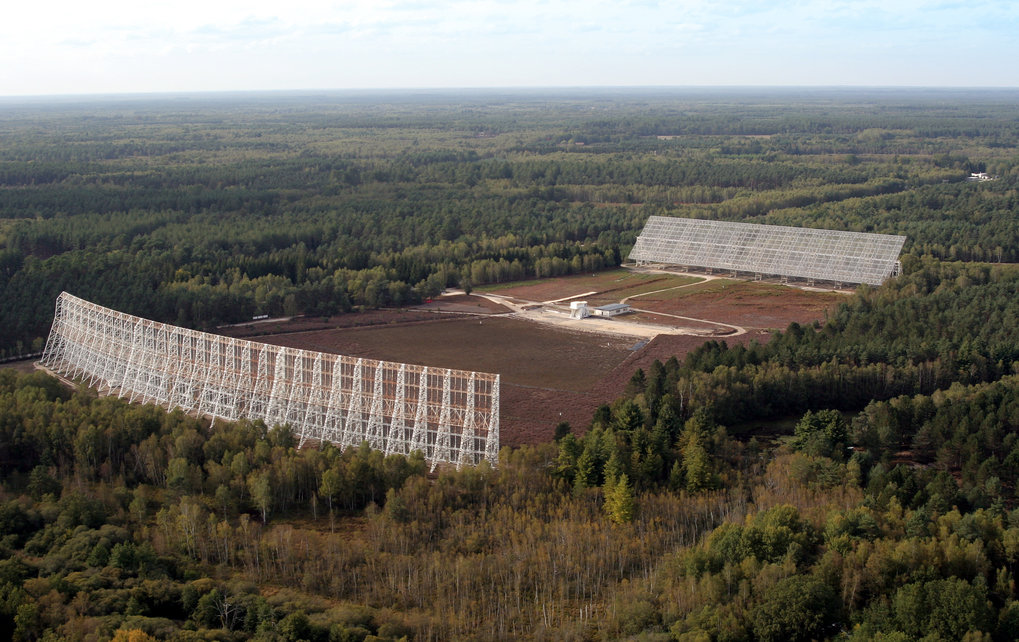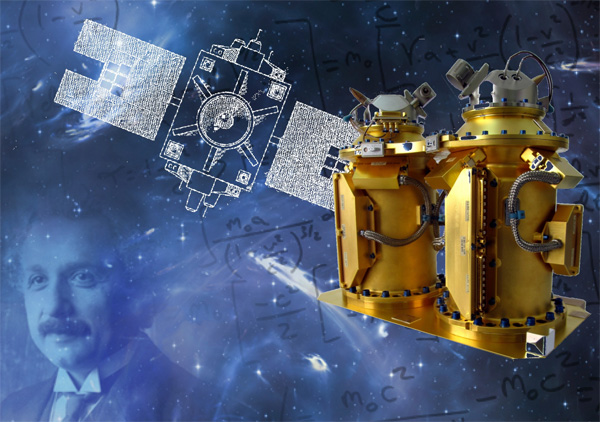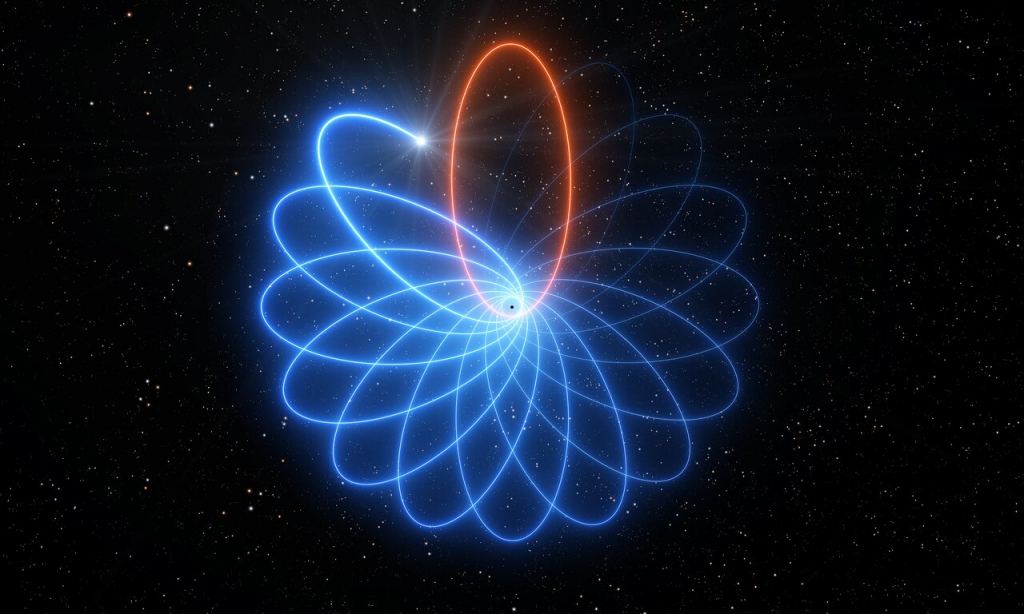Six and a half decades after he passed away, famed theoretical physicist Albert Einstein is still being proven right! In addition to General Relativity (GR) being tested under the most extreme conditions, lesser-known aspects of his theories are still being validated as well. For example, GR predicts that gravity and inertia are often indistinguishable, in what is known as the gravitational Strong Equivalence Principle (SEP).
Thanks to an international team of researchers, it has been proven under the strongest conditions to date. By precisely tracking the motion of a pulsar, the team demonstrated that gravity causes neutron stars and white dwarf stars to fall with equal accelerations. This confirms Einstein’s prediction that freefall accurately simulates zero-gravity conditions in all inertial reference frames.
Their study, which recently appeared in the journal Astronomy & Astrophysics, was led by Dr. Guillaume Voisin. a research associate from Manchester University’s Jodrell Bank Centre for Astrophysics. He was joined by researchers from the Observatoire de Paris, the Max-Planck-Institute for Radio Astronomy (MPIR), and the Centre National de la Recherche Scientifique (CNRS).

For the sake of their study, the team relied on a rigorous new method that combined radio telescope observations with the more recent data obtained by gravitational wave detectors. This allowed them to precisely track the motion of a pulsar known as PSR J0337+1715, which is part of a triple star system located 4,200 light-years away in the constellation Taurus.
PSR J0337+1715 is a millisecond pulsar, a type of rapidly-rotating neutron star that emits regular radio pulses as it rotates 366 times per second. Its companions are both white dwarfs, stellar remnants that remain after stars exhaust their nuclear fuel and undergo gravitational collapse (aka. go supernova). Neutron stars are even more extreme due to their greater density and gravitational force.
This makes them fitting candidates to test General Relativity, which Einstein eventually arrived at thanks to his work with the equivalence principle – which Einstein referred to as “the most fortunate thought in my life.” Einstein began to contemplate this after the publication of his Theory of Special Relativity in 1905, which stated that the speed of light is constant and the same in all reference frames.
Shortly thereafter, he began working on unifying this theory with gravity, since Newton’s theory of Universal Gravitation was incompatible with relativity. By 1907, he theorized that an object in freefall behaves exactly as it would in zero-g since gravity causes everything to accelerates at the same speed – i.e. the “universality of freefall”, where everything on Earth falls at the same rate on Earth.

This insight led Einstein to realize that gravity is a manifestation of curved space-time and acts on all masses the same way (which lies at the heart of GR). In the case of neutron stars, their intense gravity alters the curvature of spacetime in a way that is many trillion times stronger than what the planets or even the Sun are capable of.
This is what makes pulsars (a rapidly-rotating neutron star) like PSR J0337+1715 – discovered in 2014 by radio astronomers – an ideal testbed for testing GR and SEP. Using the Nançay radio telescope located in the Sologne region of France, Dr. Voisin and his colleagues observed this pulsar for eight years and precisely measured its motion by monitoring the arrival times of its radio pulses.
What this showed was that PSR J0337+1715 falls with the same rate of acceleration as the nearby white dwarf in the gravitational field of the outer white dwarf. These results confirm the universality of freefall with the greatest precision and under the most extreme conditions to date. Previously, the most precise test was carried out by a mini-satellite developed by the French Centre National d’Études Spatiales (CNES).
This was known as the Micro-Satellite à traînée Compensée pour l’Observation du Principe d’Equivalence (MICROSCOPE), which operated from April of 2016 to Oct of 2018. This satellite carried small masses within its frame to show how they experienced identical accelerations while being exposed to the gravitational field of Earth while in Low Earth Orbit (LEO).

This is not the first time that SEP has been tested using this system, but it does improve over previous results in two ways. First, it provides tighter contraints of the differences in acceleration between the pulsar and the inner white dwarf. Second, it relies on a better understanding of the properties of neutron stars, which is the result of the LIGO/Virgo observatories detecting collisions between them. As Dr. Voisin put it:
“Confirming it to this precision constitutes one of the most stringent tests of Einstein’s theory ever made – and the theory passes the test with flying colors. Moreover, the results also provide very stringent constraints on alternative theories of gravity, which compete with Einstein’s general relativity to explain gravity and, for example, dark energy.”
The study is also significant because of how it lends further credence to GR over alternative theories of gravity. To be fair, most theories of gravity incorporate Einstein’s insights regarding SEP and describe gravity as a geometric phenomenon – in that it arises from the curvature of spacetime. What sets them apart from GR is how the curvature of spacetime is altered by the masses of large bodies.
While these alternative theories predict that small and large objects fall with the same acceleration in the same gravitational field, things become different when describing astronomical objects (which are held together by gravity itself). Here, alternative theories predict that deviations from universal acceleration will occur, whereas GR predicts that astronomical objects abide by the same rules as small objects.

By testing Einstein’s theories in an extreme environment like a neutron star, the universality of freefall has been shown to truly be universal. This is perhaps the most significant takeaway from this test, which is the way it demonstrates how GR – as inspired by the simplicity of Einstein’s “most fortunate thought” – truly captures something fundamental about gravity and the inner workings of Nature.
Special Relativity, General Relativity, the Cosmological Constant, and now the Strong Equivalence Principle (aka. universality of freefall). If Einstein were still with us today, it’s a safe bet that he would be tired of being right all the time!
Further Reading: MPIFR, Astronomy & Astrophysics

